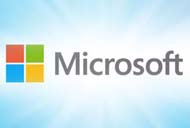On Dec. 1, Facebook’s billionaire co-founder and CEO Mark Zuckerberg and his wife, Priscilla Chan, pledged to give 99 percent of their fortune to charity, thrusting the philanthropic efforts of those in technology circles into the spotlight.
This week, Microsoft President and Chief Legal Officer Brad Smith outlined some of the steps his influential company is taking to combat poverty. “Today we’re announcing an expanded commitment to our corporate philanthropy around the world with a broader ambition and a new organization within the company, Microsoft Philanthropies, to make this ambition a reality,” said Smith in a Dec. 15 announcement.
Microsoft Philanthropies is headed by Corporate Vice President Mary Snapp, a 27-year Microsoft veteran. Lori Forte Harnick, general manager of Citizenship and Public Affairs at Microsoft, will act as the group’s chief operating officer.
The initiative is centered on the ideas of improving access to technology, advocating STEM (science, technology, engineering and mathematics) education and championing accessibility for people with disabilities.
“Through Microsoft Philanthropies, we will contribute in new and more impactful ways to a societal ecosystem that connects the benefits of technology to those who need it most and work harder to drive inclusive growth of the global economy,” stated Smith. “We will strive to bridge gaps within and across communities through more widespread access to technology that enhances the productivity and quality of life for the people of those communities.”
In support of that vision, Microsoft plans to gift cash and technology to non-profit partners. “These investments will span the spectrum of digital inclusion, from providing access and connectivity to the public cloud to delivering digital skills training to help people get jobs and start businesses, to educating the next generation of innovators through greater access to computer science education for all youth,” Smith said.
Internally, Snapp’s group will help Microsoft’s workforce bring its skills and expertise to bear on the challenge of eliminating digital inclusion gaps. “We will do this on multiple levels, starting with non-profit technology deployments and extending to global hackathons that create new technology ‘proofs of concept’ to address a number of key societal challenges as well as selecting a number of marquee data science projects to benefit broad segments of the global population,” Smith added.
The Redmond, Wash., software maker also plans to make the most of its considerable clout. “We will partner with non-profit organizations to call attention to the root causes of digital exclusion, matching the reach and scale of our brand with the expert knowledge and service that nonprofit organizations provide to their communities,” said Smith.
Microsoft Philanthropies is the latest in a long line of charitable initiatives from the company and its leadership.
Since stepping down as CEO, Microsoft co-founder Bill Gates—also a tech billionaire—has turned his attention to philanthropy. Last month, the Bill and Melinda Gates Foundation announced it was enlisting Snapchat users to raise as much as $3 million to the nonprofit group (RED) to combat AIDS.
